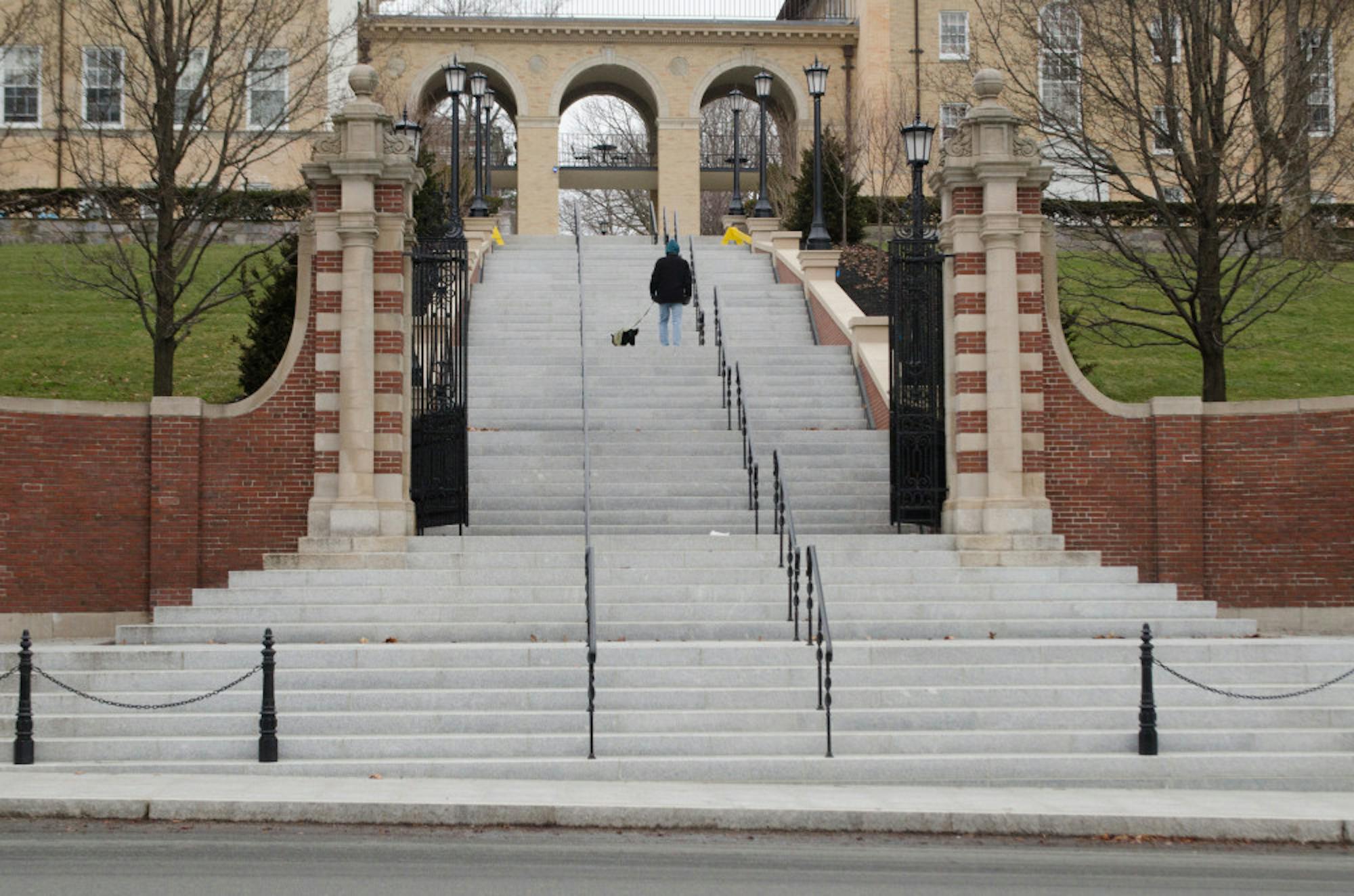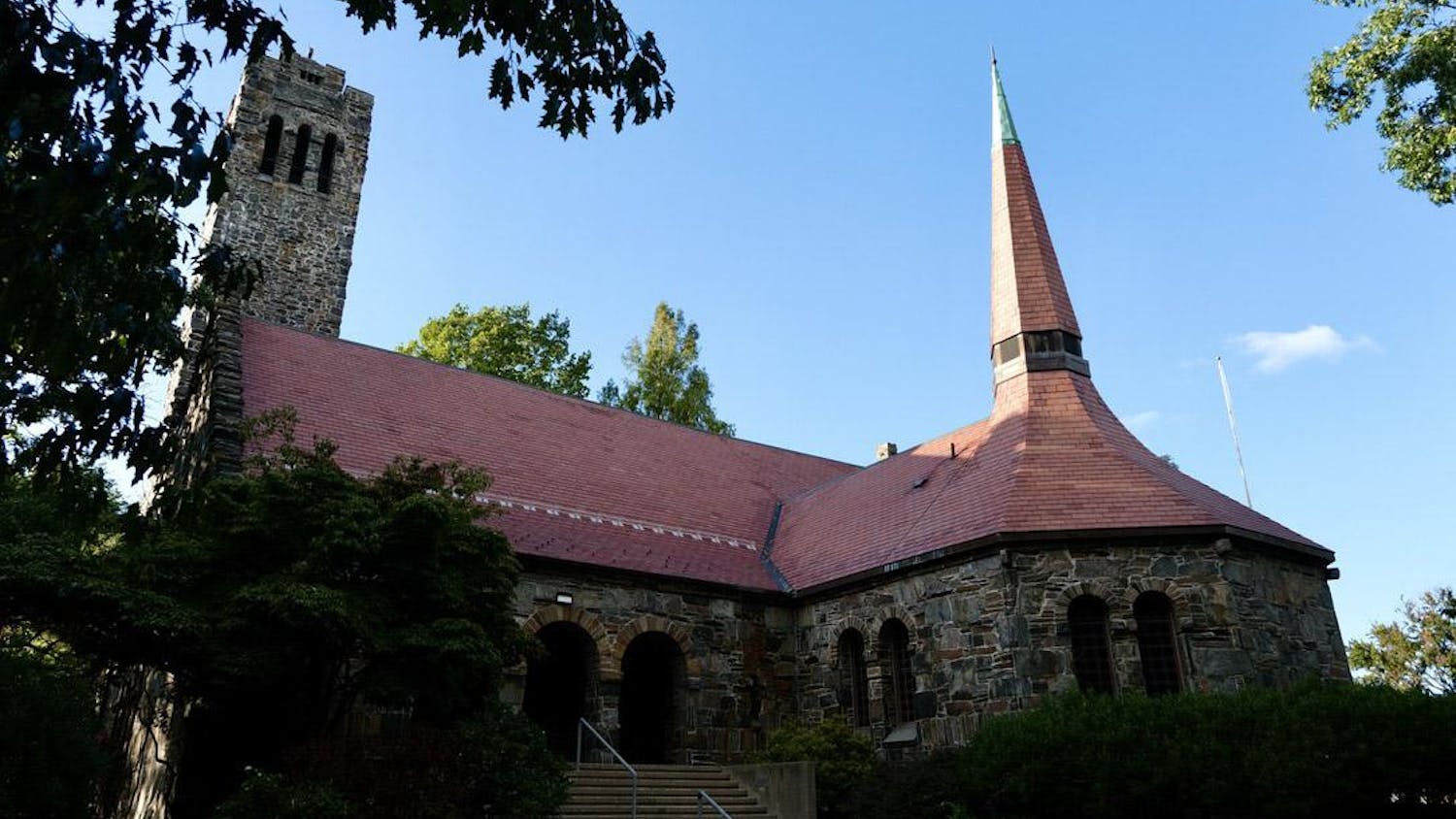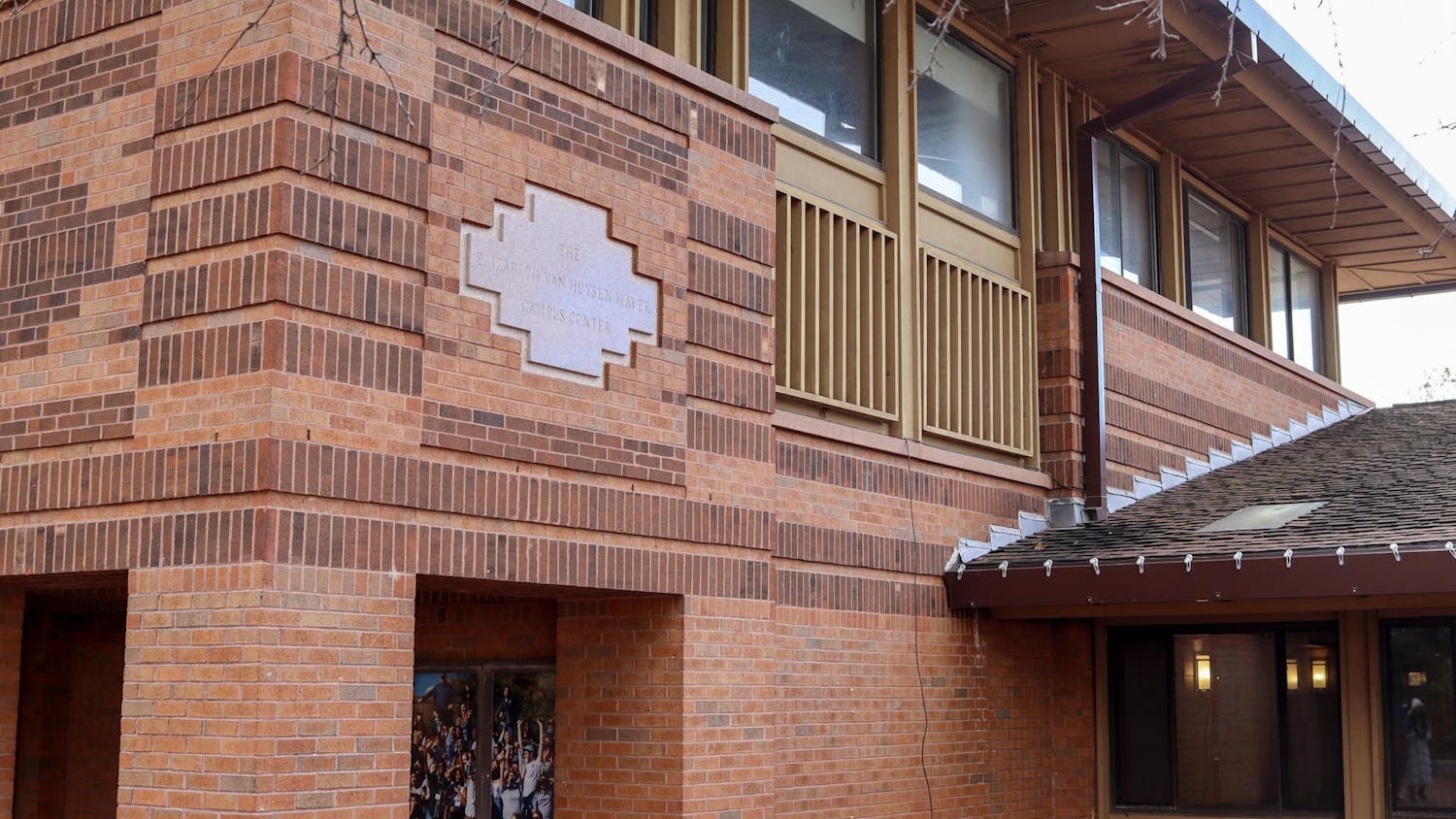After months of being closed off to the Tufts community, the Memorial Steps reopened in December, bringing to an end to the university’s six-month construction effort to preserve the campus landmark.
The steps, also known as the Memorial Stairs, were built in the 1920s and designed as a tribute to Tufts alumni who died serving in the Armed Forces of the United States, according to an April 2015 article in Tufts Now.
Raymond Santangelo, the senior manager of project administration, said the steps have begun showing signs of age in recent years. According to an an April 16 article in the Tufts Daily, prior to the recently completed renovations, the steps had not received extensive maintenance in over 15 years.
“The harsh winter last year really put [the stairs] over the edge,” Santangelo told the Daily in an email. He explained that the snow melt pellets used to combat the blizzards of the 2014-2015 school year were a leading factor in the stairs’ degradation.
According to Santangelo, the melting snow drifts on the stairs last spring caused extensive damage to the exposed concrete steps. The structure’s safety was in question, prompting the university to pursue a more permanent solution to sustaining the stairs, he said.
“Granite has replaced concrete on all of the landings,” Timothy D. Smith, the project's architect, told the Daily in an email.
According to Santangelo, the new granite surface is more resistant than concrete to erosion from snow melt pellets, and should make the restored stairs better equipped to withstand Boston’s winters. He explained that snow melt pellets may no longer be necessary throughout the winter season.
“The new stairs and landings have a snow melt system under them that is fed by hot water from a manifold [chamber] in Miner Hall,” he said. “This will minimize, if not eliminate, the need for snow melt pellets.”
Rainfall-related issues have also been addressed in the restoration, Santangelo said. The stairs now feature a complex drainage system that directs water into holding tanks embedded in the hillsides, he said.
Smith explained that from a passersby’s perspective, the Memorial Steps appear to have undergone minimal changes. He said that the most significant visual difference is in the staircase’s length, since the steps now connect to the Upper Campus Road. There are also two new gardens flanking the top section of the stairs.
Renovations have also addressed foot traffic erosion to the steps, according to Smith. The old Memorial Steps were embedded with metal inserts and these have now been replaced with laser-engraved inscriptions, he said.
Smith said that renovation efforts also led to changes to the memorial aspect of the stairs. He explained that the new Memorial Steps features two separate plaques to recognize World War II and the Korean War respectively. Before the renovations, the conflicts shared a single commemorative plaque.
“A new plaque was also added for the Mideast wars,” Smith said.
First-year Max Lalanne said the steps are an important part of campus as a memorial and for students to navigate daily between classes.
"The Memorial Steps are an iconic and particularly thoughtful part of our campus,” he said.
University completes six-month restoration of Memorial Steps

Construction on the Memorial Steps was completed this winter.





